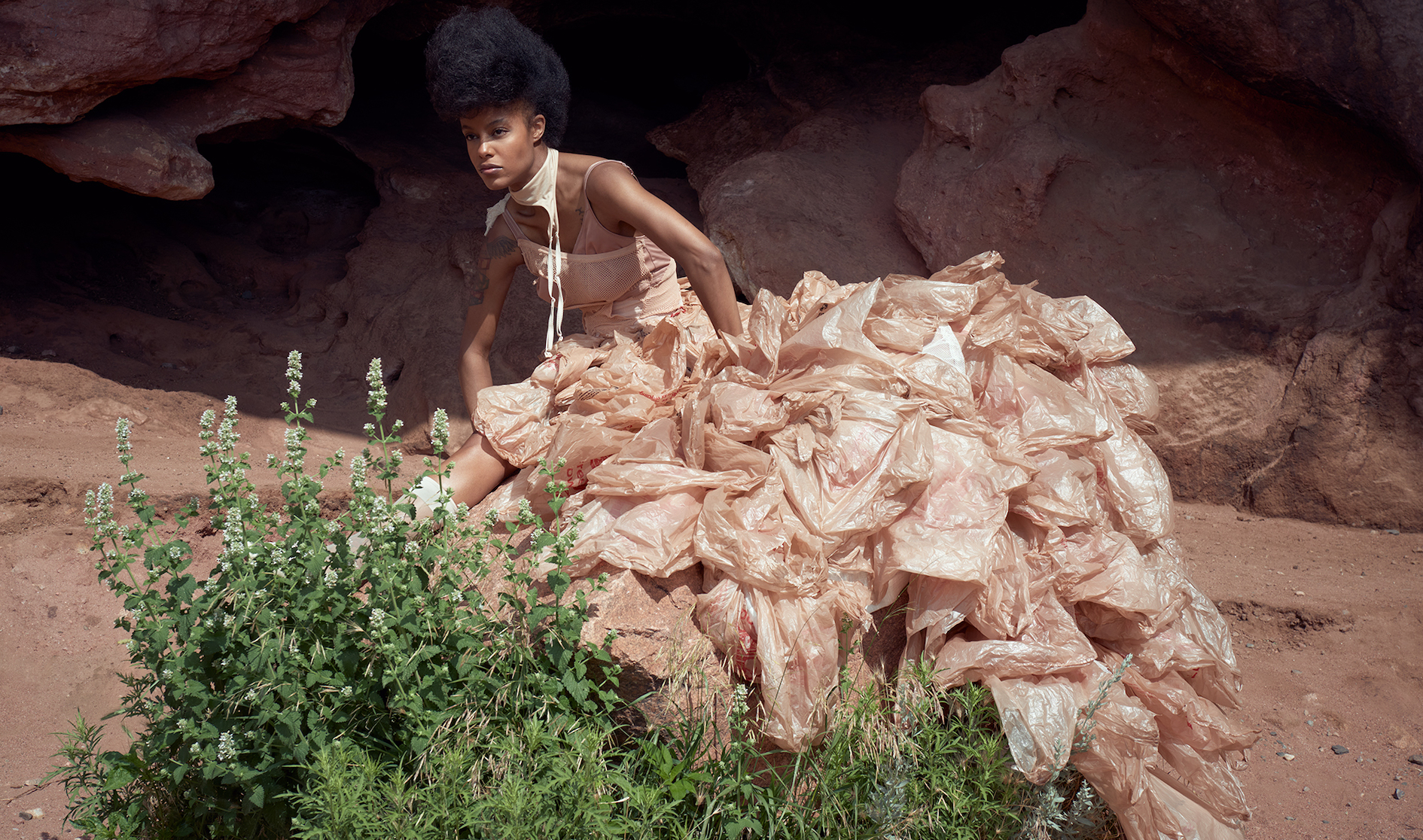Matilda Marginal empowers people to be their unique selves through her avant-garde designs that she creates completely on her own. Having been born in Moscow and growing up in Siberia alongside her fashionable mother, Marginal honed in on the creativity she always felt she had to create her very own fashion brand, Marginal. The name itself means, “related to or situated at the edge of something,” which fits perfectly with the designs she features, as they are all different and do not fit into one single style. Asymmetry, deconstruction and avant-garde are all words Marginal uses to describe her brand.
Creating unique pieces for people to own and wear is not her only goal with this brand though. Marginal promotes sustainable manufacturing and slow fashion by creating less waste when making her designs, in addition to upcycling. The mission for her brand also includes instilling confidence in those who come across her designs, pushing people to be themselves. She does this in an attempt to destroy all types of beauty standards from gender to age and she said, “clothes shouldn’t depend on gender. I love when a man can wear a dress and I also believe people of all ages are beautiful.”
Although not initially working in the fashion industry, it seems as though it was always in the cards for Marginal. With her creative mind, motivation to work towards her goals, and eagerness to not take the easy way out, Marginal not only created her own brand but her own community too.
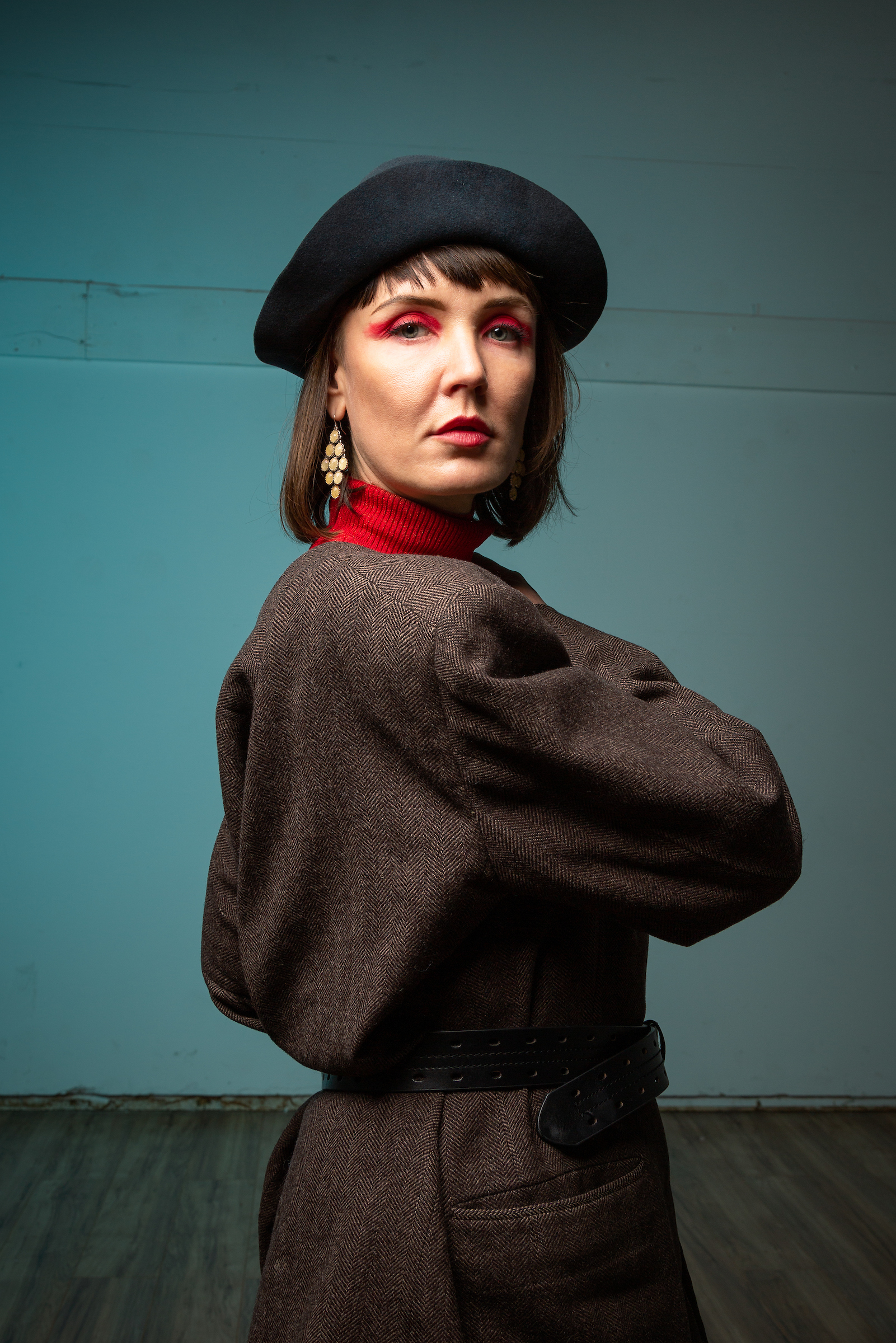
303 Magazine: Describe your journey into fashion.
Matilda Marginal: It’s a long story. Actually, I have a degree in economics. And that was my profession until I moved to the USA. I feel like I was too young to understand how important it is to listen to yourself before you choose your career. So, I worked as an accountant, but an unusual accountant. I was too artistic and always looked like I just walked on a runway. A few times my boss asked me to go home and change because my look was too far from the office dress code. At that time, fashion was my hobby and my very far away dream. I moved from Moscow to Denver and spent some beautiful days without work, waiting for my work permit. I talked to myself and decided it’s time to change before I get into this endless home-office-home circle with a boring routine again. I studied through a design academy online and then made my first badass collection.
303: Were you always interested in fashion growing up? Did fashion play an important part in your life?
MM: I was a little girl who was trying to sew the edgiest stuff on my barbie doll. Now when I look back I can see how creative I was in my designs. By the way, later in my design classes, they were teaching us techniques with a doll — that same technique I was always using as a child. I was growing up in Siberia and this was a hard time in Russia as there was a deficit of everything — empty shelves in the stores, no food, no clothes. My mom was very young and she was a fashionista. To look cool she started to sew for herself and me, and it was so unique that you could never meet anyone dressed the same. I guess that is what she gave me — this habit to be different from others and feel good in that, to be brave enough to wear what you like, even if other people give you funny looks, and to have a desire to find a solution for any crazy idea.
It’s so important to me. I want to give people more freedom, I want to change beauty standards, I want people to think out of the box, I want people to love themselves and see the beauty in simple things. I want them to see the beauty in what they think is ugly.
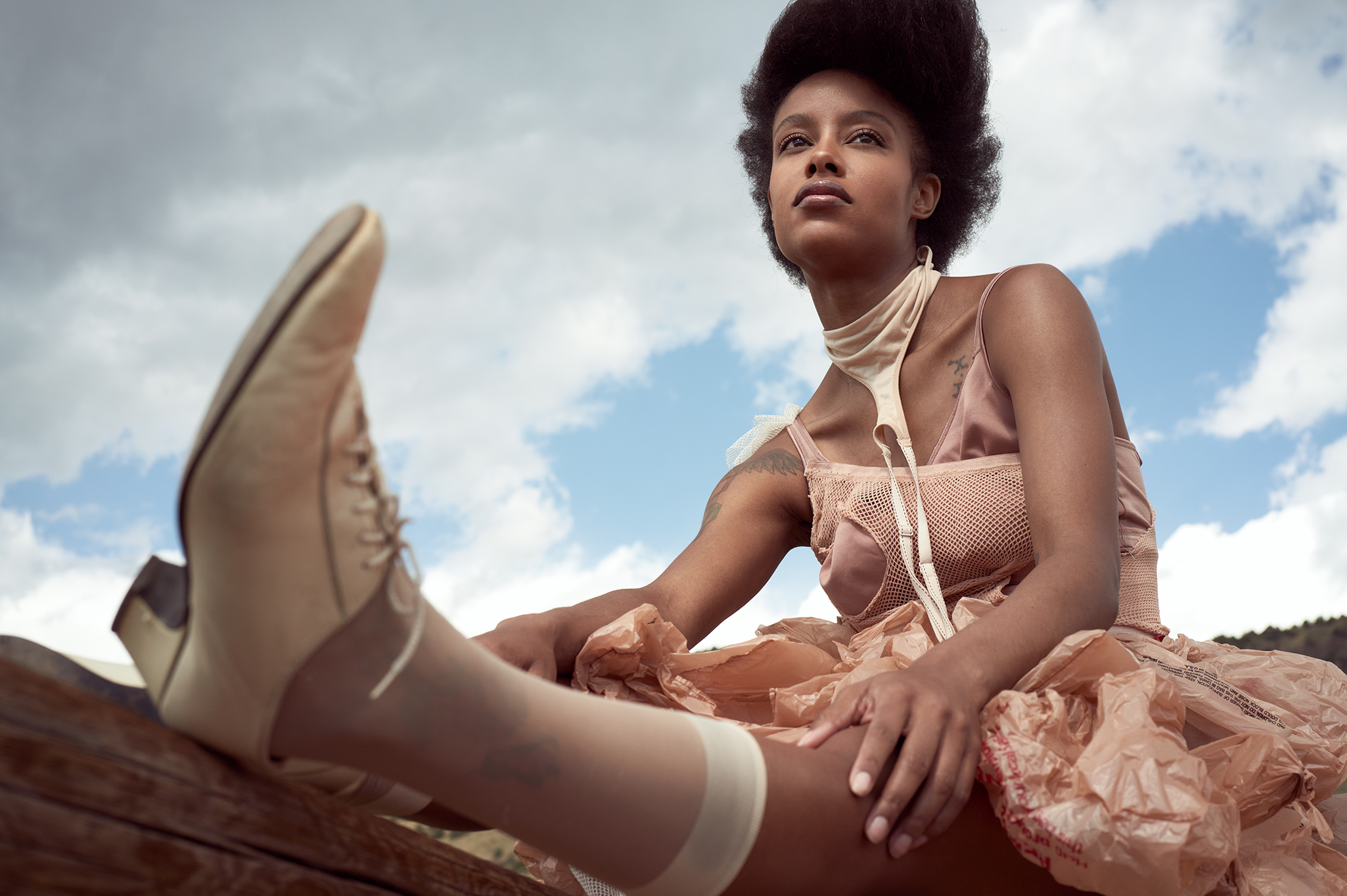
303: Tell us more about how your brand came to be.
MM: My brand, Marginal, was born in my first collection, maybe earlier! I think the idea was growing in my head for all of my life. It’s my life experience! Everything that I create is the mirror reflection of what I went through or what I see now. I see the beauty in old, dark, broken, uneven, defective, unideal, real, alive! So, all my clothes are like that — marginal and on the edge.
I decided that the best way to make anything is to be honest. Honest with yourself and with people around you. My brand is me — we have the same philosophy, mission, lifestyle and clothes.
303: What landed you in Denver and why did you feel like this was a good place to base your brand?
MM: I got married to someone from here. It probably would’ve been easier to grow my avant-garde brand in Moscow, but I don’t choose the easy way! And, if my goal is to save the world, Denver is a good place to start! This city is growing and has big potential. There is no bad place to do what you have to do.
303: Your profile states, “apparel may be grayed but let it be artistic.” Can you elaborate on what this means to you?
MM: In Russian is sounds a bit different, but it means everything is eternal in this world. And even if clothes are not the most important thing here, you can still find art in it.
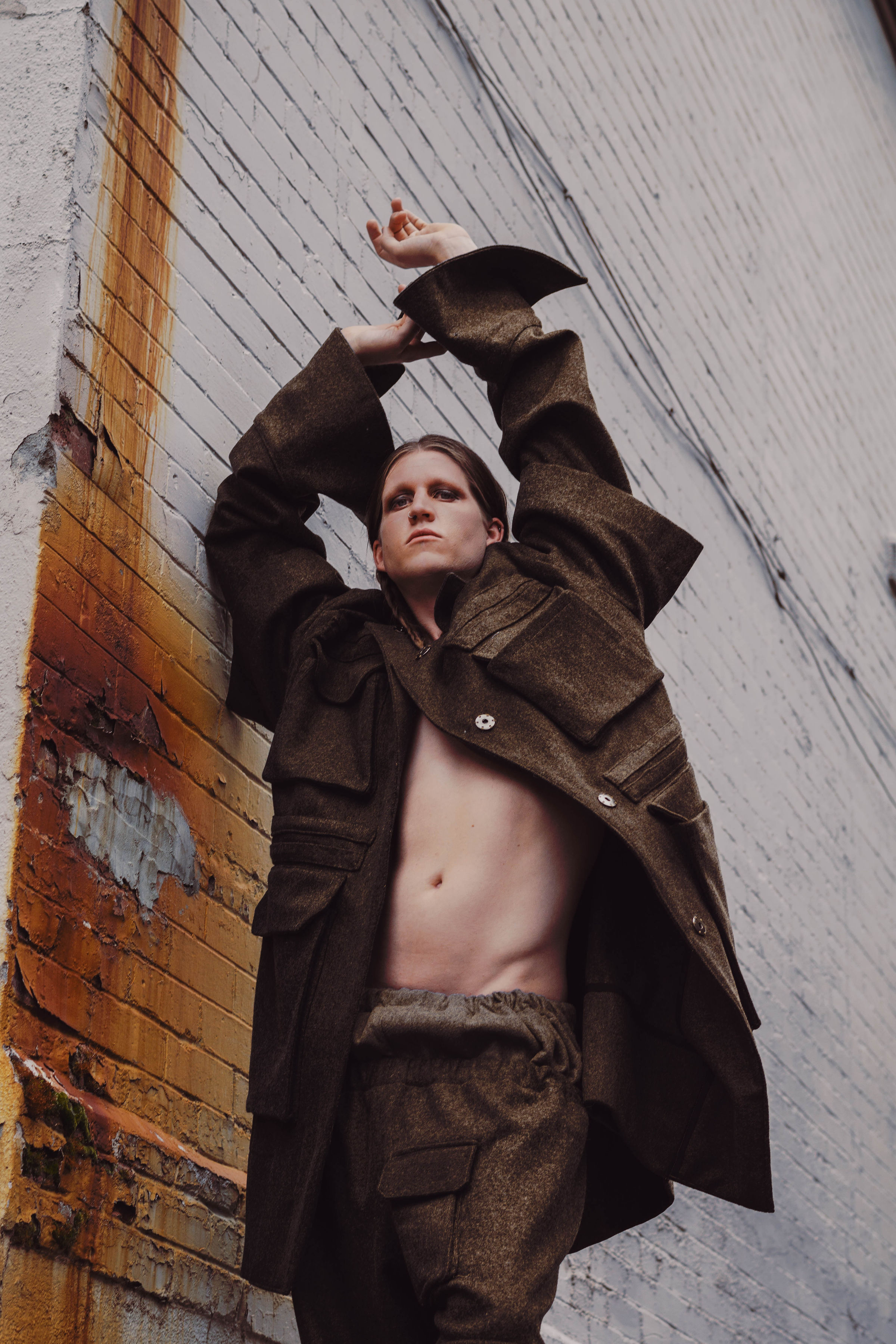
303: What does your design process look like from start to finish?
MM: It’s always different. But my best, craziest designs are usually done with old clothes. I take the piece, put it on the form, play with it and finally get an unusual or fresh idea. Then, I anchor this construction, first it on myself or a model, test it by wearing it out and correct it if needed. Then, the couture prototype is ready. I usually use these pieces for runway shows, photo sessions, filming, creative projects, or simply sell them. Sometimes I’ll make a pattern from it for manufacturing, or if it’s too difficult to work with a patternmaker, a seamstress produces the same piece in order to sell it.
303: What has been the biggest challenge of owning your own brand in the fashion industry?
MM: Like most artists, I guess it’s the business part. I don’t have assistants, investors or managers. I would love to just create but I have to do everything myself. Also, I am so greedy about time, it’s never enough! I have so many ideas and sometimes I want to cry because I have to spend my time on the business aspect. It’s also a new country for me so, there is a cultural challenge for sure. You will laugh at me, but starting my Instagram was also a challenge. I hate social media, I was never active, and I just didn’t see the necessity to tell everyone about my life.
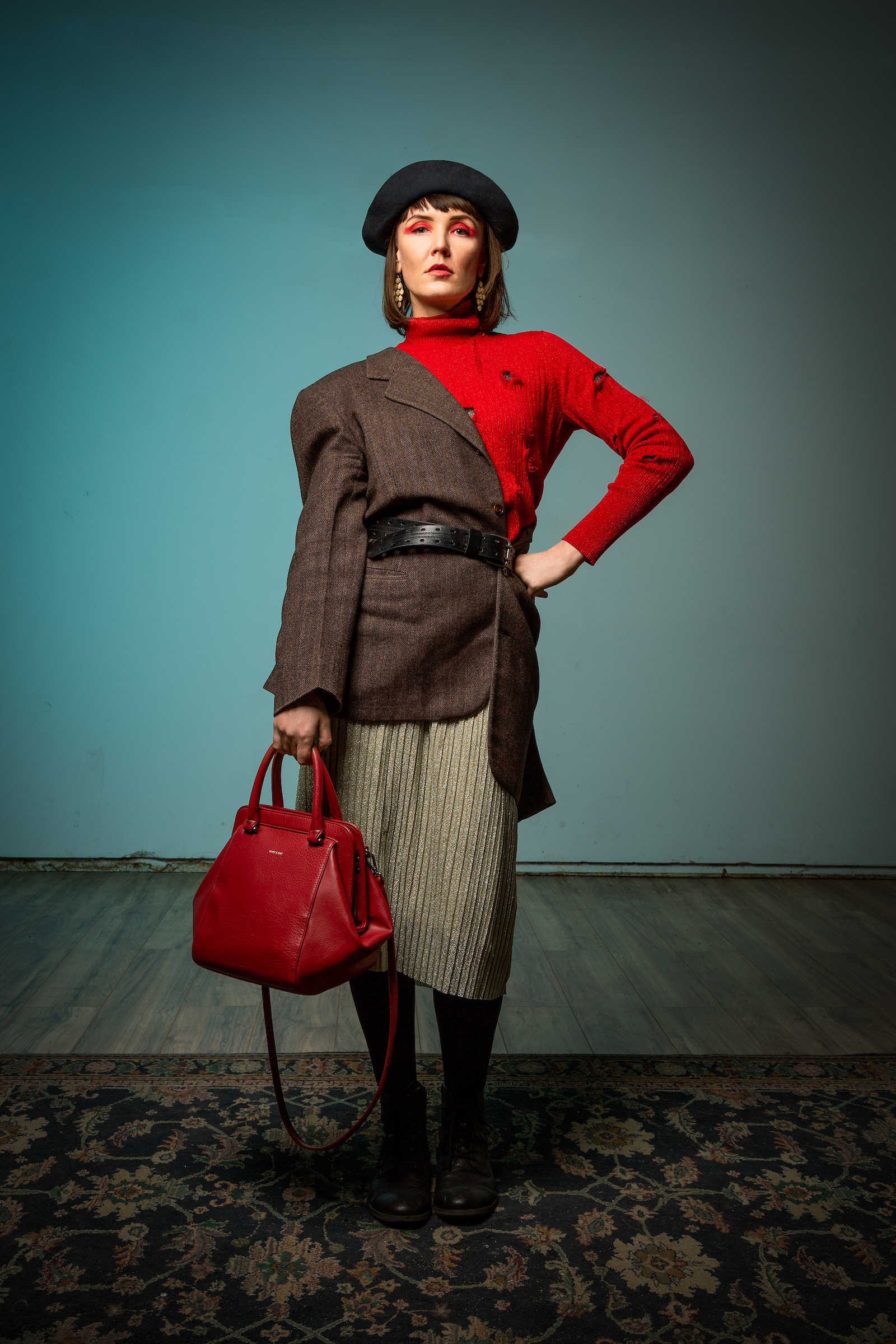
303: What are ways you incorporate your work in fashion into your everyday life?
MM: First of all, it’s important for me to be inspired by everything that I see every day. I have to be curious, It helps me feel alive. Even when I don’t work, I work. I take a rest from sewing by doing collages. I rest from collages by creating the plot for a new video. I rest from photo and video shooting by watching good movies. All of this inspires me. I always study and work at my new goals, and all this is my work. That is how I live every day. And, I of course love to experiment with clothes, hair, makeup and style myself. I enjoy spending hours doing that just for myself.
303: What do you hope for the future of your brand?
MM: I hope the pandemic will stop soon and everybody can enjoy traveling again. Because it’s another good way to be inspired and learn new things. I hope we all stop wasting so much and will prefer slow fashion to fast fashion. I hope we will respect nature and each other. I hope people will be brave and feel free to be who they want, to wear what they like, to be different. Only this will allow my brand to prosper!
Art Director / Creative Producer / Fashion Designer: Matilda Marginal
Creative Director: Maryna Andreieva
Cinematographer & Editor: Jonny Edward
Model: Alicia Myers
Makeup Artist: Ashley Mazin
Hair Stylist: Tennisia Littleton Broberg





